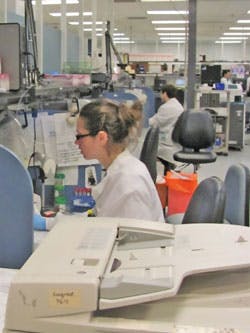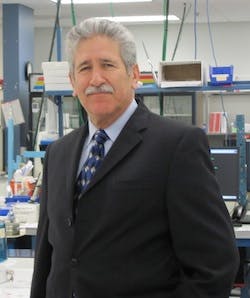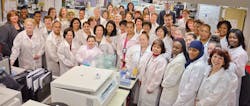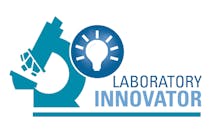The late management consultant and author Joseph Juran popularized the idea that any business has “external customers” and “internal customers.” External customers are the people who come to the business to make use of its products or services; internal customers are people within the business or affiliated with it—employees, coworkers, suppliers, and other stakeholders.
For a clinical laboratory, external customers are the patients, physicians, and others who make use of the lab’s expertise. If the lab is affiliated with a hospital or hospital system, the other departments of the hospital would probably be considered external customers. A lab’s internal customers are, primarily, the people who work in the lab.
The judges who had the responsibility of selecting Medical Laboratory Observer’s 2013 Lab of the Year (and two runners-up) did not have an easy task. Many worthy candidates filled out the online nomination form. Taken together, the nominated labs—all of which should consider themselves winners—demonstrated an impressive commitment to serving the public. A deep base of knowledge, superb technical skills, and a uniform dedication not only to excellence but to continuing improvement were hallmarks of the nominees.
Most of them, too, showed their understanding of the need to serve both external and internal customers, and provided specific examples of their attempts to excel in both areas. MLO’s 2013 Lab of the Year, Catholic Medical Center Laboratory, was the one that, in the opinion of the judges, gave evidence of the broadest and most demonstrably successful efforts, first, to serve the public and the medical professionals with whom they interact, and second, to offer opportunities for employees to grow professionally and increase job satisfaction.
The annual meeting of the Clinical Laboratory Medicine Association is being held April 7-10, in Orlando, Florida. National Medical Laboratory Professionals Week follows close behind; it’s the week of April 22 through 26 this year. (You can read more about that at the American Society for Clinical Laboratory Scientists website: www.ascls.org/about-us/celebrate/medical-lab-professionals-week.) All in all, it is a perfect time to read about the exemplary clinical medical laboratory that MLO is proud to recognize as its 2013 Lab of the Year.
LAB OF THE YEAR: CATHOLIC MEDICAL CENTER
The Catholic Medical Center (CMC) Laboratory, located in Manchester, New Hampshire, is an integral part of the healthcare system in the Granite State’s largest city. The leaders of the CMC Lab combine a dedication to the best patient care with a commitment to the professional development of the lab’s 110 employees—all in the context of consistent, positive involvement with the Manchester community.
Manchester is a vital city of more than 108,000 people. More than 70 languages are spoken there, as refugee populations have arrived in recent years from such nations as Afghanistan, Iran, Iraq, Egypt, Thailand, and a number of African countries. More than one-sixth of the city’s population speaks a language other than English at home. Like most American cities of any size, Manchester has a homeless population, estimated at 1,700. The CMC Laboratory, which performs approximately 2.5 million tests each year, works diligently to serve the needs of a diverse population.
To that end, the lab works in conjunction with many hospital departments to support a variety of community health initiatives. Manchester’s homeless and refugee populations are offered entry into the patient healthcare system through various programs such as New Horizons, Families in Transition, and the West Side Neighborhood Health Center. Jennifer Carnevale, Point of Care Testing Specialist for CMC, stresses that “there is a lot of outreach to those populations.” Striving to make laboratory services easily accessible to as many people as possible, CMC has eight patient service centers in the community. Throughout the health system’s clinics and programs, Carnevale adds, they offer point of care services such as fingerstick glucose testing, cholesterol screening, strep screens, urine testing (including pregnancy), flu, and breast and cervical cancer screenings.
Patient care and customer service
More broadly, CMC Lab leaders continually strive to put in place demonstrable improvements in customer service and patient care. At the center of such efforts is the handling of information. The center of information for the CMC Lab is its Customer Service Team (CST). This four-person team is the main resource for patients, families, physicians, hospital, and laboratory staff. The CST works closely with the Lab’s LIS Team to improve the documentation of any specimen-related problems.
The team helped in the development of the electronic CSA (Customer Service Action), which replaced a manual paper system. The CSA populates on a work list, providing improved tracking and ensuring that problems are addressed quickly. Statistical filters are utilized to better target areas for process improvement. The CST also provides real-time requisition checking and scanning into the LIS to allow lab staff access to original physician order forms and maintains the integrity of the database, ensuring proper and timely distribution of results to the ordering providers.
The lab is currently implementing SoftID, a system that allows staff to scan patient bar-coded wristbands at the bedside and to print accessioning labels from a hand-held device for labs drawn. This allows for positive patient identification and for real-time evaluation of all lab orders to be drawn, reducing the amount of times a patient is drawn.
The CMC Laboratory just upgraded to a new hospital glucometer system that allows the use of an on-board ADT for improved patient identification, reports a greater range of results, allows for testing on patients with lower hematocrits, and is much closer to the reference methodology than the previous system.
In order to better focus and encourage the lab’s specimen processing team, groups of clinical laboratory assistants (phlebotomists) met to discuss their responsibilities and focus on key aspects of their jobs and how they could do better. The group agreed on a team mission statement: “Touching Patient Lives One Specimen at a Time.”
Productivity and efficiency
The CMC Lab has instituted a number of measures to improve productivity. It has implemented auto-verification in the chemistry and coagulation departments, reducing turnaround times. It conducted a statistical review of the automatic repeat criteria in chemistry and found that, due to the precision of newer analyzers compared to prior instruments, repeat testing was no longer necessary. “That can drastically cut down on your turnaround time,” comments Carnevale.
The lab’s Pathology section has incorporated small batch processing into its workflow, utilizing state-of-the-art tissue processers for runs several times a day for small specimens and establishing a continuous workflow within the section that involves the histotechs, path techs, and pathologists. This enables shortened turnaround times for small biopsies and often same-day resulting. “We can report small biopsy results within 24 hours, and sometimes within the same day,” notes Roberta Provencal, Executive Director for Laboratory and Outpatient Rehab. Incorporating these “smart processors” also has eliminated the need to change chemicals and solutions in batches several times per week and allows staff to change only solutions that need refreshing or changing.
The clinical laboratory recently went through a complete renovation that involved moving the entire operation to a different floor in the hospital. This gave CMC the opportunity to redesign workflows and space with an emphasis on LEAN processes.
Pathology services were recently brought back into the hospital, and the section was designed to utilize LEAN processes throughout. Examples include using two-dimensional bar coding on all samples, blocks, and slides; using voice recognition software; and incorporating IHC into histology, eliminating the need to send out the testing and further streamlining the process. Pathology is now able to function without a third shift or weekend crew.
The laboratory has installed three large TV monitors in Specimen Processing, Hematology/Coagulation, and Chemistry, providing real-time, viewable tracking of all pending samples. STAT samples are color-coded and appear at the top of the list, allowing for quick status checks at all times. This has helped the technologists prioritize, watch for STAT specimens, and be aware of outstanding specimens and/or delays sooner.
The addition of a slide maker/stainer to the end of the lab’s hematology instrument automated line allows for automatic creation of slides if samples meet the criteria for a slide review or manual differential. This helps ensure that slides are not missed and are made promptly.
Innovation and creativity
The leaders of Catholic Medical Center Laboratory are always looking for better ways. For example, using Six Sigma principles, the LIS supervisor was able to analyze the process for non-blood specimen orders. Through her work with the LIS, HIS, laboratory staff, and nursing, the laboratory developed an improved process for ordering, collecting, and labeling these specimens.
The CMC Lab has made great efforts to identify testing it could bring in house. During the last couple of years, it has brought in the following: a Pathology section to include cytology, histology and anatomic pathology; vitamin D testing; GC/chlamydia testing; heparin-induced thrombocytopenia testing; allergy testing; fetal lung maturity; haptoglobins; rapid detection of C. diff; H. pylori; CMV; toxoplasmosis; herpes I and II; and syphilis.
The main clinical laboratory was given a unique opportunity four years ago when it moved to a much larger, newly renovated space. The staff was asked for its ideas on how best to use the newly designated space and establish the most efficient work flows. “Basically, they were asked,” says Provencal, “‘If you had a magic wand and could create a lab from scratch, what would you want in this lab to be able to work most efficiently?’” Ask and ye shall receive: The staff contributed excellent ideas that were incorporated into the design of the new lab, most notably a “7-eleven” style walk-in refrigerator with glass access doors that holds all of the major reagents, enabling loading from the inside and eliminating rotation of stock; and the creation of a specimen processing area like the hub and spokes of a wheel, so that the highest-volume testing is closest to the specimen processing area, with lower-volume testing further back. Other innovations included lines of automation in Chemistry and Hematology; preanalytical automation in Specimen Processing; negative pressure in Microbiology; and access windows to the clinical lab for specimen drop-offs and blood pick-up. “For the staff to see their ideas come to fruition was really energizing for everyone,” says Amy Schultz, Laboratory Technical Operations Manager.
Teamwork—and a great place work
The involvement of lab staff in designing the new space is a good example of how Catholic Medical Center values its “internal customers.” Like most labs, CMC deals with changing staffing needs and must come up with creative solutions to staffing challenges. They pull together as a team to get the job done. “We pride ourselves on coming together to find solutions to problems that arise in our laboratory,” says Provencal. One team, the Partnership Council, has the responsibility of identifying potential issues or opportunities and brainstorming solutions. Council members represent all areas of the lab: registration, outpatient lab patient service centers, phlebotomy, techs, pathology, LIS, and supervisors.
Laboratory management has been working to refine job descriptions and create a “job ladder,” a system that recognizes staff for the various complexities of the jobs which require additional skill levels and abilities, to include the following jobs: Clinical Laboratory Assistants 1, 2, and 3; Phlebotomists 1, 2, and 3; and Pathology Technicians 1, 2, and 3. The newly designed levels provide various paths for future growth and development for personnel and offer positive reinforcement and additional training “Giving opportunities to people who want them, making an effort to empower them in their job, is essential to retaining your good employees,” says Carnevale.
In this environment, it is no surprise that laboratory staff members are constantly trying to improve not only the laboratory but themselves. Staff members voluntarily continue their training in various areas and use new knowledge and skills to innovate the lab environment. During the last couple of years, 12 staff members graduated from the CMC Management Boot Camp; four graduated from the CMC Leadership Academy; the Hematology and Chemistry supervisors received Certificates in Laboratory Leadership and Management; the Blood Bank Supervisor trained to be an AABB inspector and completed the requirements to be an ASQ-Certified Quality Auditor; the LIS Supervisor earned a LEAN Six Sigma Black belt; the Microbiology Supervisor received an MBA with a focus in Healthcare; and the Point of Care Specialist received a Master’s in Organizational Leadership. CMC is improving from within.
The CMC Lab staff has fun together, too. The “Sunshine Committee” boosts employee morale, recognizes outstanding work, and encourages staff to enjoy one another’s company at and outside of work. Staff take trips together, celebrate holidays, welcome new employees, organize charity drives, and put out newsletters to help keep people informed of laboratory happenings.
Recently, the lab wanted to upgrade the automated messages on its phone system and engaged the staff in the process. “The Voice” contest was held: anyone in the lab who wanted to “audition” could do so. A team of judges reviewed the audition recordings and everyone in the lab voted. A winner was selected and announced at a General Lab Meeting. Congratulations to customer service representative Lois Feher—the “Voice” of the Catholic Medical Center Laboratory.
FIRST RUNNER-UP: CLINICAL LABORATORY PARTNERS
Clinical Laboratory Partners (CLP), in Newington, Connecticut (just south of Hartford), is wholly owned by Hartford Healthcare. It is part of the Diagnostics Services division of Hartford Healthcare, which also includes Acute Care, Behavioral Health, Home Care, Physical/Occupational Therapy, Physician Practices/Occupational Health, and Senior Health entities. CLP is the largest laboratory in Connecticut, with about 850 employees and some 80 Patient Service Centers (phlebotomy) throughout the state.
First runner-up: Clinical Laboratory Partners
Tenacity, technology, and teamwork
CLP performs 12.8 million tests annually. At its laboratory located within Hartford Hospital, its phlebotomy team draws approximately 19,000 patients per month. The Phlebotomy Department has a Customer Service Program called “Phlebotomy Code of Patient Care” that lists six elements that are key to delivering quality care: 1) Make the patient your first priority. 2) Go above and beyond their expectations. 3) Value their time. 4) Make a commitment to quality. 5) Make your work place appealing to your patients. 6) Ensure the overall experience wows the patient
That code was tested in 2011-2012 when Hurricanes Irene and Sandy hit parts of Connecticut—and CLP was up to the challenge. Even while dealing with personal hardships, CLP employees stepped up to provide uninterrupted services to outpatients and hospitals that they serve. In the wake of Hurricane Irene, Connecticut had critical power outages for nine days, and the staff, working from a back-up generator for six days, continued service to the state in addition to five hospitals and 56 Patient Service Centers The hurricanes had many unsung heroes; the people of CLP were among them.
CLP’s lab within Hartford Hospital supports the hospital’s transplant program through TEG (thromboelastography) testing, which is performed in the lab with real-time viewing in the OR for clot formation and dissolution. This testing is done on liver transplant, extracorporeal membrane oxygenation (ECMO), and complex cardiac patients. CLP performs testing of immunosuppressive drug levels and reference testing for leukemia and lymphoma patients using polychromatic flow cytometry. The establishment of this program, says Greg Makowski, PhD, Vice President of Technical Operations, was “a coordinated effort among the laboratory staff, the transplant physicians, and the flow cytometry division of the laboratory.”
Jim Fantus, President and CEO
CLP employees from technical and non-technical departments work together on teams to implement necessary changes to meet client needs. CLP’s H3W (How Hartford Healthcare Works) process fosters the generation of ideas to improve processes by employee-led work groups. Jim Fantus, CLP’s President and CEO, notes that “H3W has its roots in W. Edward Deming’s Continuous Quality Improvement (CQI) management philosophy.” [A highly influential management consultant and author, Deming (1900-1993) pioneered concepts that have been adapted by many successful organizations worldwide.] At CLP, Fantus notes, “H3W has created a work environment that engages the staff and improves the quality of the work. It asks them for ways to improve everything we do, from the customer’s experience, to the patient’s experience, to the employee’s experience.”
Makowski gives a good example of an H3W contribution: “H3W was instrumental in reorganizing the physical layout of the laboratory to make workflow more streamlined and efficient. We engaged all the technical people as well as the processing department and the couriers who drop off specimens.” Claudia Simard, General Core Lab Manager, agrees that “it was truly a laboratory-wide effort, across all three shifts,” and points out that “since we made it a modular area, we have been able to continue to fine-tune it.”
The work group “Call to Action” created a business plan and justified all critical results to be called to a licensed caregiver by the client service department. This change decreased the interruptions to the medical technologists, allowing them to continue verifying patient results with the goal of improving TAT and decreasing technologist phone use. CLP also created a process to communicate and document issues with respect to the quality of patient tests, safety, and HIPAA violations. In addition, CLP offers Lab Information Exchange to providers, enabling them to access lab work performed across the healthcare continuum.
Productivity has increased because of staff-presented solutions, and recognition of contributions by staff is a key value at CLP. Many departments have recognition programs, such as Phlebotomy’s “Kudos to You” program. With each compliment received or H3W recognition, a card is sent for a job well done along with a “kudos” bar. Logistics has a Recognition board, and pins are given to the couriers. Also, CLP’s technical staff supports the training of medical technology students, including providing supervised access to hospital laboratories during their education.
Standardization and internalization
Within the labs of CLP, there is standardization of testing platforms for continuity of care and increased productivity. In 2012, the main laboratory had an overall 11.8% improvement in productivity, and the lab within Hartford Hospital increased productivity by 4%. Mackowski comments, “We wanted to standardize the testing platforms across the system, not only for our coag, but for our chemistry, immunochemistry, and hematology services.”
CLP personnel stress that there are many factors that contribute to increased productivity, but they point particularly to appropriate staffing and scheduling, internalization and automation, LEAN processes, improvements in the physical layout, and strategies to relieve techs of clerical duties.
Like CMC, CLP has worked hard to bring testing in-house. Its main laboratory implemented PF4 IgG testing to support its inpatient teams and to reduce blood bank and pharmacy costs. This testing is used to identify whether a patient has an antibody to heparin. The assay that had previously been used had about a 60% false positive rate, required patients to be put on expensive anticoagulant until confirmatory testing was completed. The new test not only reduced the number of false positives, but reduced send-out test and pharmacy costs. CLP routinely evaluates send-out testing to identify where it can improve support of its clinicians by in-sourcing these tests and/or improving TAT. It recently implemented lead testing in support of its pediatric population. Its ability to bring this test in-house became more important to clinicians when Connecticut closed the state’s lead reporting laboratory.
Quality control
QC procedures are particularly impressive at CLP. Its laboratories are accredited by multiple agencies and always meet and exceed their guidelines. Its Key Quality Indicators report tracks and monitors patient care issues. Each month, data is compiled from all departments and submitted online, and then displayed with visual indicators. The status of the metric is automatically marked with green (good), yellow (caution), and red (needs addressing). CLP has a data warehouse that can retrieve any information related to patient care testing. Complete investigation and corrective action is implemented through all phases of testing: Pre-analytical, Analytical, and Post-analytical.
At CLP, Quality, IT, Laboratory, and business operations have worked together to transform the Quality Management (QM) Program from a manual to a paperless system. This new process changed how CLP reports, monitors, and communicates patient care issues, as well as proficiency testing for the CAP System. Features include Version Control, Electronic Approval, Quiz Central, and Control Log (which monitors the status of all policies and procedures). Medical directors review procedures annually, and the system can provide alerts based on the last review date.
Going mobile—and the personal touch
CLP deployed Intermec CN50 mobile devices along with AirClic software to scan and track all bar-coded samples collected at PSCs and clients’ offices. It is leveraging this information within its home-grown data utility to provide real-time tracking of both stat and routine specimens. Twelve CLP laboratories across the state participate in proficiency testing through such agencies as the College of American Pathologists (CAP) and American Proficiency Institute (API). CLP has created an automated process that alerts individuals at key stages, from when specimens are due for delivery to the submission of results. When exception forms are required for failures, the system provides a standardized template, and the form is routed electronically for review, edit, and approval.
Amid all this technological and systemic excellence, CLP has an appealing personal touch in the communities it serves. Director of Marketing Amber Sadosky reveals that in partnership with the Connecticut Science Center, CLP “increases science awareness among young people in the community.” Lab leaders came up with a creative way to stress the importance of hand washing at its Health Lab within the Center: CLP provided a station for youngsters to put on a solution that reacts under UV light to see how many germs are missed in “normal” hand-washing. In this venue, the laboratory has also educated the community about lab testing and provided a look into microscopes that shows blood cells, bed bugs, deer ticks and more.
CLP piloted free cholesterol screenings at its PSCs, to an overwhelming response. Through this screening, CLP educated more than 400 patients about their HDL and total cholesterol levels. In one case, CLP’s Medical Director noticed that a patient needed further testing and called the patient personally to ensure she received follow-up care. That’s the CLP way.
SECOND RUNNER-UP: OVERLOOK MEDICAL CENTER
Overlook Medical Center, part of the Atlantic Health System, is located in Summit, New Jersey, a vibrant small city that is also a bedroom community for commuters who work in nearby New York City. Overlook plays a central role in serving the healthcare needs of the 22,000 residents of Summit and many more people from surrounding areas. The Overlook Medical Center Laboratory, which performed some 1.65 million tests in 2012, plays a vital role in nurturing health and wellness in a busy, heavily populated area.
How does Overlook do it? Jane Francella, BS, MS(ASCP), Point of Care Coordinator, points first to the “Shared Values” of its 100 employees. These values are summed up in the acronym PRIDE, which the lab created to reflect Atlantic Health System’s Healing Culture. Francella spells it out: “PRIDE blends our Mission, Vision, Shared Values and Performance Standards based upon: Professionalism, Respect, Involvement, Dignity, and Excellence.”
Care and service come first
The shared values represented in PRIDE underlie a commitment to customer service and patient care that is apparent in an impressive series of achievements that the OMC Lab points to with, well, pride.
The OMC Lab provides a 24/7 Client Service Center, staffed by customer service specialists who respond to all in-coming phone calls. It streamlines the Lab’s customer service response by offering one phone number for all laboratory issues, and allows clinical laboratory professionals to concentrate on patient care.
Customers interested in seeking their own answers can access an online “Laboratory Test Guide” available by a quick link from Atlantic Health System’s intranet home page. The Guide provides the following information for each test the Lab performs: Lab Test Code, Nursing System Test Name, Specimen Requirements, Pediatric Minimums, Reference Ranges, Turnaround Time, and additional relevant information. The Guide helps patients be informed medical consumers.
The Lab’s Blood Donor Services continually strives to educate and provide current health information to the public. Donors and patients receive the most advanced medical information. The Lab’s goal, Francella says, is “healthier communities for healthier lives.” Staff members encourage patients to adopt “Life’s Simple Six.” 1) Get active 2) Eat better 3) Lose weight 4) Stop smoking 5) Control cholesterol 6) Control and maintain blood sugar. To practice what it preaches, the OMC Lab has changed its snack menu to include fresh fruits, nuts, and low-sugar, low-carb items.
One premier example of the Lab’s contributions to patient care is the recent publication of its system-wide Blood Transfusion Guidelines, offered to all healthcare providers who order blood products. This reference tool is designed to guide appropriate blood product utilization. Meanwhile, the Lab’s Blood Bank has established an ABO Confirmation Policy to prevent the transfusion of incompatible blood products due to misidentification of the patient at the time of sample collection.
The Lab also takes part in the IMP (Infection Prevention/Microbiology/Pharmacy) Committee, which discusses issues such as urine culture reporting, antibiotic reporting (cascades), and standardizing procedures. It also explores new technology and rapid methods that can improve turnaround time, and is currently trialing a multiplexed, automated nucleic acid test for the identification of genus, species, and genetic resistance determinants for a broad panel of gram-positive blood culture isolates.
Rising to the occasion(s)
Like Clinical Laboratory Partners, Overlook Medical Center Laboratory was tested by Hurricane Sandy, which devastated the region. The Lab’s team put aside personal concerns about power outages, flooded homes, downed trees, and gas shortages and committed to maintain coverage in the lab. Many staff members spent several nights on cots and gurneys in offices and treatment rooms to do so. During this time, the hospital Cancer/Infusion Center kept extended hours, as it was the only open Center in the region. The Lab’s Blood Donor room offered its space so patients could receive their treatments. The Lab maintained good turnaround times during the hurricane, helping the Infusion Center and EDs to maintain patient flow.
This past winter’s influenza epidemic presented the OMC Lab with another challenge, which it turned into an opportunity to shine. Ray Monahan, Laboratory Manager, recalls, “The incidence of the flu started to increase around the middle of December and peaked during January, We would have 200 patients in our ED, and the hospital had never been as full.”
The lab responded to the record numbers of patients and the pressing need to accurately and quickly provide flu testing results by offering Respiratory Viral PCR testing in-house and also rapid testing, and by adding extra shifts to accommodate this testing. “We needed to clear out the ED and make sure that the patients were triaged appropriately. We had to run the tests 24/7 and shift around staff to maintain it,” Monahan says. Turnaround time for PCR testing was reduced from three to seven days previously to an average of eight hours.
The Lab also provided educational flyers to nursing about proper specimen collection for the flu samples. With the help of its Materials Management department, OMC Lab staff scoured the country to obtain substitute viral specimen collection kits. They had plenty on hand even as the rest of the region stocked out of kits. “We were the only game in town, and the staff definitely rose to the occasion,” concludes Director of Laboratories Michael S. Overa, MBA, MT(ASCP).
Building the team
It is not only during times of extraordinary challenges that the OMC lab exemplifies the value of teamwork, however. Lab Shared Governance is an example of its dedication to teamwork in quieter times. This committee meets monthly and is comprised of a lab staff representative from every department and shift. It studies and makes proposals with regard to collective accountabilities related to management (policies and procedures), practice (safety and standardization), quality improvement, and education.
Speaking of education, the OMC lab offers a Professional Advancement Career Track (PACT) program for staff. This voluntary professional development program is designed to promote professional advancement for laboratory personnel. The PACT Program support staff’s professional goals, enhances laboratory standards, and achieves organizational goals. Its criteria are built on the Mission, Vision and Shared Values of the health system, and the standards of the American Society of Clinical Pathologists for clinical laboratory scientists.
Besides the opportunities offered by the PACT program, employee recognition is important in the Lab’s culture. Lab coordinators send congratulations and gift cards to recognize extraordinary efforts by staff members. Employees who demonstrate superior customer service, leadership, or expertise are presented with PRIDE in Action awards.
Also, the Atlantic Health System has a school for Medical Laboratory Scientists. Lab staff actively participates in this program by presenting lectures in their areas of expertise and by training students on the bench. That takes time away from patient workload, but diligent teamwork ensures patient care is not compromised while students receive an exemplary learning experience.
New directions and efficiencies
An x-ray blood cell irradiator was implemented in the OMC Lab’s Blood Bank last year to replace a 30-year-old irradiator that utilized a nuclear source. The project required continuous communication among the Nuclear Regulatory Commission, the Summit Police Department, the Atlantic Health Safety and Security Department, Best Theratronics of Canada, the Overlook Medical Center Engineering department, and the blood bank before final implementation last July. The replacement irradiator is used to irradiate units for oncology patients and requires less than half the time the old system needed. “We now have the ability to provide the irradiated products faster, right to our outpatient infusion unit,” says Overa. The equipment has helped to the Lab respond to increased requests for irradiated blood and to improve patient flow in the Infusion Center.
The Microbiology staff reduced the final report for “no growth” urines from 48 hours to 18 to 24 hours. The Donor Room collected 24% more products than in 2011, all of which are utilized by OMC patients.
The core lab now employs state-of-the-art equipment technology that uses automated digital cell morphology by which cells are automatically located on a stained peripheral blood or body fluid smear, pre-classified, stored, and presented for confirmation by a technologist. Smears can be reviewed from any location. Manual differential results are standardized, and routine work is more efficient.
The OMC Lab embraces LEAN concepts in planning and improving workspaces and processes. “We won’t put in any piece of equipment o change any process without going through the LEAN process first to see how it fits,” Overa notes. Numerous projects have been promulgated, all involving input from lab staff. One recent project involved the couriers and sample transport between its lab sites. Waste and duplication were eliminated, and standardization was implemented to gain efficiency.
QC is now totally automated in Core Lab, and technologists are alerted immediately of any quality control problems. Turnaround time reports for critical tests in the ED and Critical care units are monitored weekly; also monitored are positive blood culture reporting turnaround time, blood culture contamination rate, and urine contamination rate. Any deviations from the goal are investigated and resolved as part of the Laboratory Quality Plan.
Finally, the lab recently implemented a new test code, “Urine with Reflex to Culture,” which requires urines to be screened with urinalysis and if results indicate, to be sent for culture. This has reduced unnecessary cultures. Collaboration with Infection Prevention and nursing was crucial to this test’s successful execution—not surprising in a laboratory where institutional cooperation seems to be the rule.








